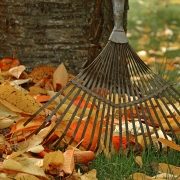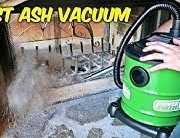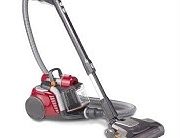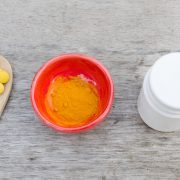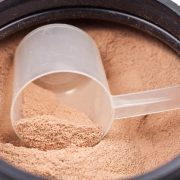We all love throwing BBQ parties or spending time beside a dazzling fireplace. However, cleaning up the ashes afterward is a messy and unsafe task for any homeowner. Previously, a dustpan and a cleaning brush was your only option to clean this mess.
As times have changed, technology has gifted us an incredibly useful tool for better cleanups, the ash vacuum cleaner. Just like the regular vacuum cleaners, you need to use the nozzle of an ash cleaner to draw up the ash and dust particles as they are disposed of in a metal canister.
To learn about this useful tool a little more, we will talk about some unique features of the ash cleaners and find out how you can use them for your benefit. Let’s jump right in.
What Is an Ash Cleaner?
As the name suggests, the tool is used to completely clear up the leftover ashes from a fireplace, pellet stove, fire pit, barbecue, or wood burner. The ash cleaner uses a motor to create a vacuum for gaining suction power.
This way, it easily collects the fine ash particles and prevents them from spreading in the surrounding environment. Now, you might wonder what’s so special about them and why can’t you use your regular vacuum cleaner for the task?
The answer is simple – because an ordinary vacuum cleaner doesn’t have proper filters to capture and hold the tiny dust and ash particles. In comparison, the ash cleaners have 2 or 3 highly efficient HEPA standard filters to do the job flawlessly. Hence, ash cleaners are your best option to keep your firebox neat and clean.
Uses and Benefits of Ash Vacuum
If you own a fireplace or a wood burner, ash vacuums are a must-have tool for you. Have a quick look at the uses and benefits of the tool to shrug off your doubts about it.
Cleanliness
The sole purpose of using an ash vacuum is to keep your place clean. Dust and ash particles are tiny, and they can easily go inside your nostrils and throat, causing irritation and cough.
In some cases, the particles reach the lungs leading to serious breathing difficulties. Ash vacuums collect every single particle of ash within moments and keep them safe for a long period. Hence, cleaning ashes will be incredibly easy for you.
Safety
Regular vacuum cleaners are combustible, and a small ember can lead them to cause a fire. Ash vacuums are extremely safe that way as they are made from strong, temperature-resistant metal and rubber.
You can use the tool to collect warm ashes without any trouble. Moreover, a disposal bag is also provided so that you can easily get rid of the accumulated ashes.
Functionality
Ash vacuums offer you great functionality, and you can use them in more than one way. Most ash cleaners come with 3 or more types of nozzles so that you turn them into a blower or a utility vac. Also, the filters are removable and washable to deliver you years of service.
Affordable
Despite being such a complex and useful tool, ash vacuums are impressively affordable. A premium quality ash cleaner will cost you around $200 or less. You can also purchase some extra accessories separately and use them for various cleaning purposes.
Best Available Types of Ash Vacuum
There are hundreds of brands trying their best to improve the tool. Hence, vacuum cleaners widely vary based on their design, capacity, and prices. Let’s have a look at the best types of ash vacuum cleaner models available in the marketplace.
Canister Ash Vacuum
The canister ash vacuum is the most common type, the most efficient, and the handiest of all. It features a large yet compact canister to collect the ashes.
Usually, the canister is designed to hold 3 gallons to 5 gallons of ash. You can also buy larger ones in case you have a broad wood stove or fireplace.
This type of cleaner is usually driven by strong motors to create powerful vacuums. Because of their large size and advanced features, canister vacuums will cost you more than the other types.
Handheld Ash Vacuum
Handheld vacuums are made very compact to avoid the issues of portability and storage. However, the ash collector here is very small and placed near the top portion of the device. So, you can only use it for cleaning small amounts of ashes at a time.
Instead of electricity-driven motors, the handheld ash cleaners feature battery packs of around 12 Volts. The batteries might be rechargeable or non-rechargeable. Usually, this type of ash vacuum costs less than the canister ones.
Cold Ash Cleaners
Typically, most ash vacuums are constructed to collect cold and dry ashes. This means you need to wait at least 12 hours to use the vacuum to accumulate the ashes.
As the temperature goes down and no glowing embers are left, all kinds of fire hazards are eliminated. Yet, this type of ash vacuum is made from temperature-proof materials to ensure complete safety.
Hot Ash Cleaners
As you can assume from the name, hot ash vacuums can collect warm and hot ashes without any trouble. Some of these vacuums can withstand temperatures up to 1200 degrees Fahrenheit.
However, we don’t recommend collecting hot ashes directly from your stove as it might lead to serious fire hazards.
How Are Ash Vacuums Designed and Work?
Without a doubt, vacuum cleaners have a pretty complex design. As we mentioned earlier, ash vacuums vary in their design and features. However, most vacuums work on a basic design and share similar traits.
Here we will look at the design of different parts of an ash vacuum and understand how they work together to keep your fireplace clean.
Suction Motor
Every ash vacuum essentially features a suction motor that works either by electricity or batteries.
The motor spins a fan to create negative vacuum pressure, allowing the device to draw in even the finest ash particles. Most suction motors have a fan speed of around 30,000 to 35,000 RPM, and they use 10 amp of electric current.
Filters
You can call them the heart of an ash vacuum. Most vacuums feature 2 or 3 heat-resistant filters. Each filter has 2 layers to catch the tiniest dust and ash particles effectively. These filters usually have a larger surface than regular vacuum cleaners to avoid clogging.
One filter is placed near the canister head, and the other one is placed above the motor. Usually, the filter material can withstand high temperatures around 200 degrees Fahrenheit.
Canister
It is the place where all the internal parts of an ash vacuum are placed. As you initiate the device, the ashes go directly inside the canister and remain there until you dispose of them.
Look for a brand that is well known for it’s canister quality and long lasting durability. One of the best sellers on Amazon is the Powersmith ash vacuum.
Mostly, the canister on this model is made of heavy-duty metal to deliver strength and temperature withstanding ability. It also features a vent that exhausts clean air. This is very important so it does not disperse ashes into the air while working.
Hose and Nozzle
Like the other parts, these two are also good with high temperatures. The nozzle helps you collect the ashes while the hose pipe sends them inside the canister.
Typically, a nozzle is made of aluminum, and the hose is flexible with a layer of metal and an extra layer of rubber or strong plastic.
Here’s how all the parts work together-
You need to turn on the device and place the nozzle near the cold pile of ash. The hosepipe will draw the particles along with some air and send them inside the canister using the power of a suction motor. Now the filters will separate the ash particles from the air. Fresh air is then released through the vent.
Final Words
So, now you know some interesting aspects of an ash vacuum cleaner. There’s no doubt that it is the handiest tool for clearing ashes and dust from your place. We hope you can use this knowledge wisely to bring extra comfort to your busy life.
You might also like this: Basics of Plant Fertilizers


